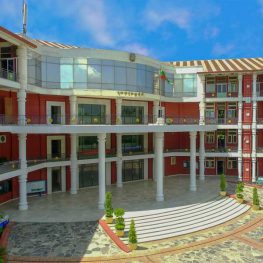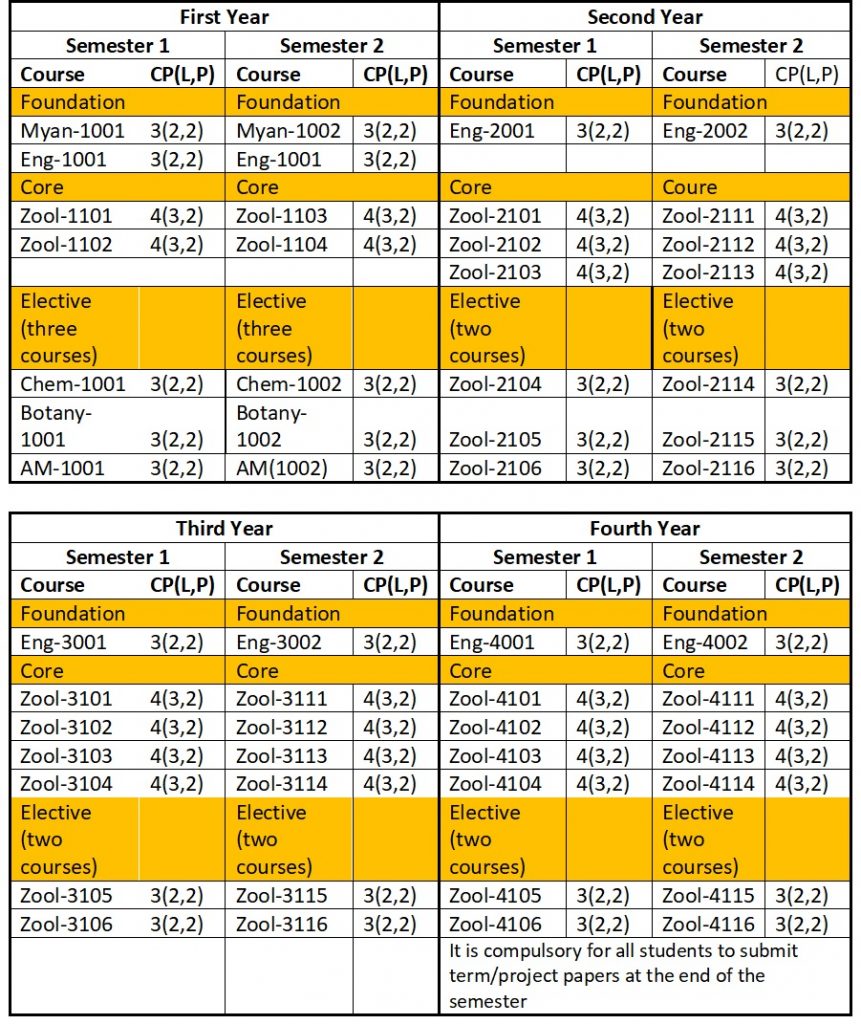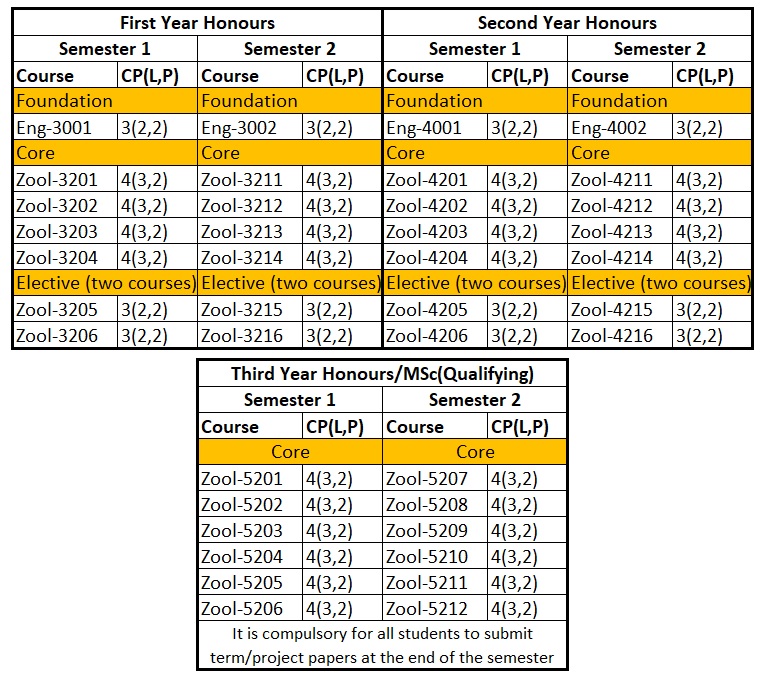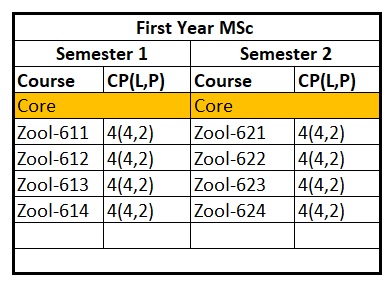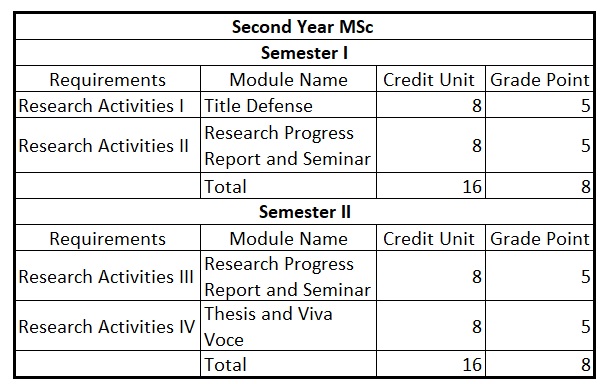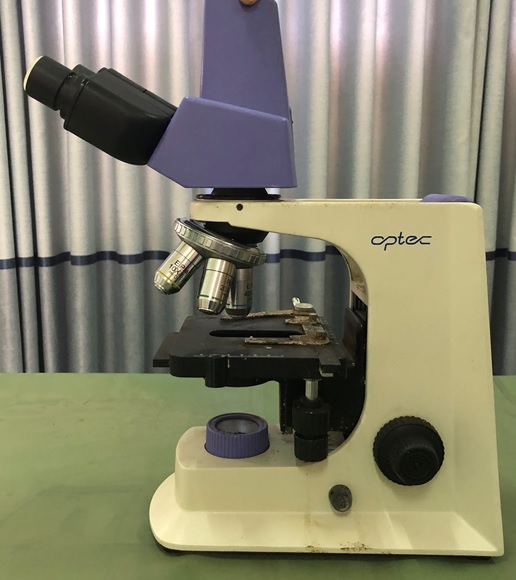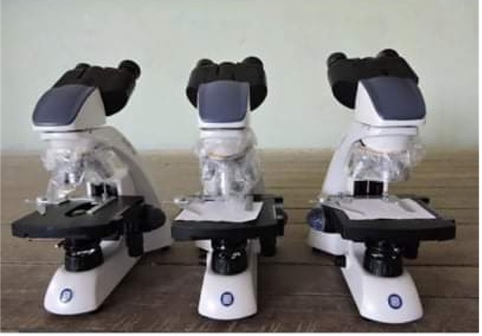Categories
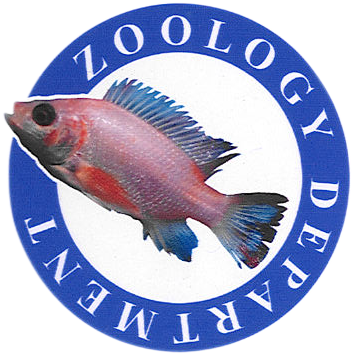 Department of Zoology
Department of Zoology
Staff
| Professor | – | 2 |
| Associate Professor | – | 4 |
| Lecture | – | 5 |
| Assistant Lecturer | – | 2 |
| Demonstrator | – | 18 |
| Office Staff | – | 2 |
| Total | – | 33 |
History of the Department
The Department of Zoology was established in Yadanabon University since 2000. The former heads of the department were U Aung Maung, Daw Khin Htut, Daw Aye Aye, Dr Khin May Nyo, Dr Thet Thet.
Vision
- To achieve the excellent department for teaching , learning and research in the zoological fields.
Mission
- To improve the students for animal welfare, conservation at wild life, protection of biodiversity and applied science.
- To promote a better understanding of the environment for sustainable use and to understand biological complexity.
- To develop leadership in the fields of life sciences and technology.
Programs Offered
| BSc / BSc (Hons) in Zoology |
| MSc in Zoology |
Curriculum
BSc in Zoology
BA (Honours) in Zoology
Students who passed second year with GPA greater than 4 are eligible to attend BSc. (Honours) classes for three years. After finished successfully, they are earned BSc. (Hons) degree majoring in Zoology.
MSc in Zoology
Descriptions Modules Offered
- Cell organization
- The Cell Theory
- Cell structure in functions
- Cytoplasm
- Constituents
- Osmosis : The Diffusion of Water
- Nucleus
- Nucleic Acids and Nucleotides
- The Structure of Nucleic Acids
- The Cell Cycle
- Cell Division
- Phases of Mitosis
- The Function of Meiosis
- Phases of Meiosis
- Nutrition
- Accessory Organs
- Cellular Respiration
- Transport
- Types of Circulatory System
- Homeostasis
- General Accounts of Kingdom Portista
- Characteristics of Kingdom Protista
- General Accounts of Phylum Porifera (Sponges)
- Characteristics of PORIFERA
- General Accounts of Phylum Cnidaria (Cnidarians)
- Characteristics of Phylum – Ctenophora
- PHYLUM – Mollusca
- Key features of Mollusca
- Characteristics of Class Pelecypoda
- Characteristics of Class Gastropoda
- Characteristics of Class Monoplacophora
- Characteristics of Class Aplacophora
- Characteristics of Class Polyplacophora
- Characteristics of Class Scaphopoda
- Characteristics of Class Cephalopoda
- Human Interaction with molluscs
- Phylum Arthropoda
- General Characteristics
- Classification
- Type Examples
- General Accounts on Noncoelomic and Coelomic Animals
- The Acoelomic Animals
- The Pseudocoelomic Animals
- The Coelomic Animals
- PHYLUM ECHINODERMATA
- Classification of phylum Echinodermata
- Characteristics of Echinoderms
- Introduction to Taxonomy of Fishes
- Classification of Fishes
- Digestive System
- Respiratory System
- Circulatory System
- Nervous System
- Excretory System
- Induced Breedings of Carps
- Conservation
- Amphibian
- General Features of the Class
- Reptile
- Relations with Humans Life History, Abundance, Activity and Special Behaviors
- Characteristics
- Flight or Aerial Adaption of Birds
- Economic Importance of Birds
- Harms from Birds
- Classification Down to Order Levels
- Structure of a Bird
- Internal Organs of Birds
- Types and uses of Bird’s Feet
- Chick Development
- General Characteristics
- Physiological Characters
- Integument, Support and Movement
- Muscles of Mammals
- Food and Feeding
- The Nervous and Endocrine Systems and Biological Rhythms
- Integument
- Basic Structure
- Respiratory Organs
- The Circulatory System
- Digestive System
- The Urogenital System
- Reproductive System
- The Nervous System
- The Systematic Background
- Scientific Names
- Operative Principles of Nomenclature
- Orthographic variants
- Zoological Nomenclature
- Number of Words in Zoological Names
- Criteria of Publication
- Criteria of Availability
- Date of Publication
- Validity of Names
- Formation and Emendation of Names
- Ecology and Biosystems
- Ecosystem Concept
- Biogeochemical Cycles
- Population Ecology
- Predation
- Keystone species
- Invasive species
- Symbiosis
- Ecosystem Complexity and Stability
- Marine Ecosystems
- Forest Ecosystems
- Animal Distribution
- Kinds of Animal Distribution
- Zoogeographic Realms
- Palaearctic Regions
- Experimental Design
- Replication and Randomization
- Randomized design
- Frequency Distributions
- Hypothesis Testing
- Analysis of Variance
- The Behavior of Individual Animals
- Animal Relationships
- The Origins of Behavior
- Socio Biology
- Animal Physiology
- Animal Nutrition and the Digestive System
- Respiration
- The Excretory System
- The Circulatory System
- Immunology
- The Nervous System
- Importance of Parasitology
- Types of Parasitic Relations
- Resistance and Immunituy
- Protozoa
- Trematodes
- Tapeworm
- Nematode
- Parasites of Arthropods
- Scope of Entomology
- Class – Insecta
- Study on the Life History, Habit and Habitat of the following with emphasis on Myanmar
- Species and their Economic Importance
- Apiculture and Meliponiculture
- Control of some Insect PestsMedical Entomology
- The Mechanism of Inheritance
- Patterns of Inheritance
- Probability Theory
- Crosses Involving Two or More Genes
- The Genetics of Sex
- Supplementary Problems
- Toxicology
- Toxicity
- Environmental Pollution and Health Effects
- Effects of Pesticides on Human Health
- Bioaccumulation and Biomagnification
- Viruses of Eucaryotes
- Classification of Animal Viruses
- Reproductionof Animal Viruses
- Adsorption of Virions
- Penetration and Uncoating
- Replication and Trancription in DNA Viruses
- Replication and Transcription in RNA Viruses
- Synthesis and Assembly of Virus Capsids
- Virion Release
- Cytocidal Infections and Cell Damage
- Viruses and Cancer
- Virion Morphology
- Plant Virus Taxonomy
- Plant Virus Reproduction
- Transmission of Plant Viruses
- Viruses of Fungi, Algae and Protozoa
- Insect Viruses
- Evolution of the Cell
- Small Molecule, Energy and Biosynthesis
- Macromolecules – Structure, Shape and Information
- Biodiversity
- Measuring Biodiversity
- Environmental Trends and Responses
- Threats on Myanmar Biodiversity
- Biodiversity Conservation
- ASEAN Heritage parks in Myanmar
- Categories of Protected Area
- Park and Sanctuaries
- Conservation and International Cooperation
- Pollution Control
- Ecological Balance
- Wild Life Preservation
- Strategy for Protection
- The Preservation
- Education of Environmental Science
- Problem of Pollution
- Major Impacts
- Testing of Hypotheses
- Basis Concepts Concerning Testing of Hypothese
- Sampling Distribution
- Sample Statistics vs. Population Parameter
- Two-group Hypothesis – Comparison of Means of Two Samples
- Student’s t- TEST
- Analysis of Variance
- Chi-square
- Correlation
- Regression
- Division, Growth and Differentiation of Cells
- The Cell Cycle
- Gametogensis
- Fertilization
- Cleavage
- Gastrulation
- Establishment of left-right symmetry in vertebrates
- Twinning
- Conjoined twins
- Cell Signaling and Gene Functioning During Development
Module No – Zool-4111/4211 : Module Name – Endocrinology
- Endocrine System
- Characteristics of Hormones
- Major Endocrine Glands
- Clinical Significance
- Anatomy of the Endocrine System
- General Introduction to Biodiversity
- Global Overview of the Status of Biodiversity
- Environmental Trends and Responses
- National Overview of the Status of Biodiversity
- Threats on Myanmar Biodiversity
- Biodiversity Conservation
- Categories of Protected Areas
- Conservation and International Cooperation
- Environmental Science
- Basic System
- Problem of Pollution
- The Animals
- Education of Environmental Science
- Control of some Insect Pests
- Medical Entomology
- Aquaculture Facilities
- Aquaculture Species
- Water Quality in Aquaculture
- Nutrition
- Diseases
- Post-Harvest Technology and Processing
- Poultry Farming
- Stages of Poultry Production
- Health Management
- Modern Faming Method that are changing the Face of Agriculture
- Gametogenesis
- Spermatogenesis
- Egg Types
- Fertilization
- Activation
- Embryonic Development and Differentiation
- Cleavage and Blastula Formation
- Gastrulation in Amphibians
- Endocrine Glands and Hormones
- Hormonal Regulation in Males
- The Ovarian Cycle
- The Uterine Cycle
- Menstruation
- Fertilization and Pregnancy
- Estrogen and Progesterone
- Hormone Action
- The Mode of Action of Hormones on Cells
- Hormonal Regulation of Nutrients
- Hormones of the Pituitary Gland
- Biological Diversity
- The Inventory of Species
- Measuring Biological Diversity
- Origins and Dynamics of Intra-and Interspecific Genetic Diversity
- Major Stages in the Diversification of the Living World
- Biological Diversity and the Functioning of Ecological Systems
- The Conservation of Biodiversity
I. Virology
- Characteristics of Viruses
- Genetic Material of Viruses
- Host, Size of Virus
- Caspid Morphology
- Viral Replication
- Beneficial Microbes
- Culturing Viruses
- Other Parasitic Particles
II. Bacteriology
- A Brief History of Microbiology
- Bacteria, Archaea, Fungi, Protozoa and Algae
- Beneficial Microbes
- Bread, Wine, Beer
- Some Industrial uses of Microbes
- The Chemistry of Microbiology
- Cell Structure and Function
- Inclusions
- Research Problem, Identification, Analysis and Technique
- Literature Survey
- Formulation of the Research Objectives
- Parametric or Standard Tests of Hypotheses
- Study Design
- Variables
- Sampling and Sample Size
- Data Collection
- Data Processing and Analysis
- Recombination Among Linked Genes
- Genetic Mapping
- Mapping the Human Genome
- Recombination among Linked Genes
- Testcross Progeny
- Supplementary Problems
- Introduction to Animal Physiology
- Function is based on Structure
- Energy Transformation
- Heat Control in Animals
- Transport of Water and Solutes
- Plasma Membrane Transport
- Components of Immune System
- Antigens and Antibodies
- Antibodies and Humoral Immunity
- T-Cells and Cell Mediated Immunity
- Immunodeficiency
- Immune Phenomena and Medicine
- Natural Selection
- Types of Selective Process
- Origin of Species
- Fossils
- Convergent, Parallel and Divergent Evolution
- Introduction
- Paleozoic Era
- Mesozoic Era
- Cenozoic Era
- Geological Distribution
- Invertebrate Palaeontology
- Vertebrate Fossils
- Fish and Amphibians
- Reptiles and Birds
- Primates
- Introduction to Biotechnology
- Recombinant DNA Technology
- Techniques of Genetic Engineering
- Genetic Engineering for Human Welfare
- Transgenic Animals
- Micrarrays
- Stem Cell
- Biotechnology and Biosafety
- Experimental Design
- Statistics
- Levels of Measurement
- Types of Variables
- Frequency Distribution
- Introduction to Normal Distribution
- Hypothesis Testing
- Parametric and Nonparametric Statistic
- Principle
- Historical Background
- Article 1 to 90
- Postgraduate Study in the Biological Sciences
- Making the right decision
- Developing your experimental skills
- Conducting A research project
- Keeping up with the literature
- Professional bodies and scientific organizations
- Overall arrangement of chapters
- Effective poster presentations
- Talking About Your Work
- Safety Matters
- The Graduate Student As Teacher
- Moving On
- ZOOGEOGRAPHY
- GEOLOGIC ERAS
- HOLARCTIC REGION
- NEOGAEA
- NOTOGAEA
- Ecology –Freshwater Ecology
- Marine Ecology
- Estuarine Ecology
- Terrestrial Ecology
- Resources
- Pollution
- QUANTITATIVE GENETICS
- Qualitative vs. Quantitative Traits
- Population Genetics
- Hardy-weinberg equilibrium
- Calculating Gene Frequencies
- Testing a Locus for Equilibrium
- Solved Problems
- Fertilization
- Gastrulation
- Early vertebrate development
- Progressive Determination
- Pattern Formation
- Sex Determination
- The SAGA of the Germ Line
- Progesterone
